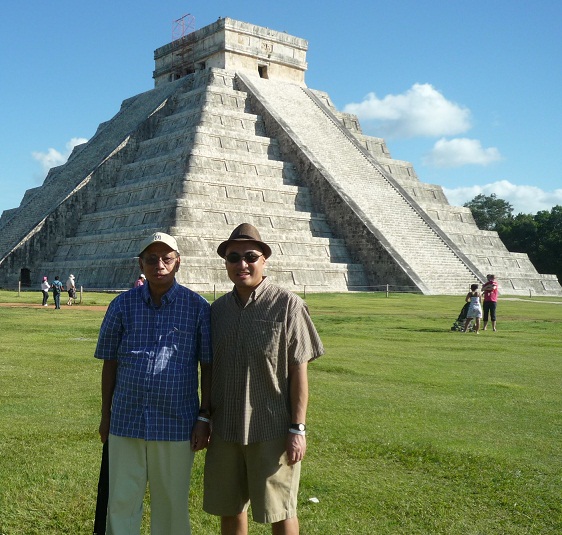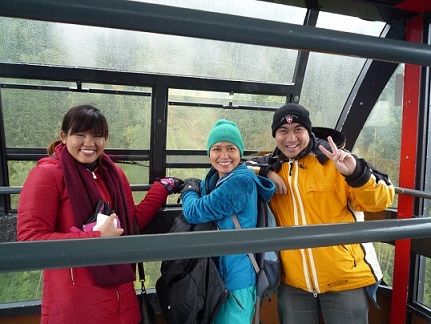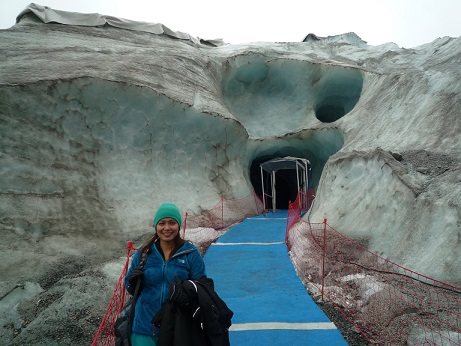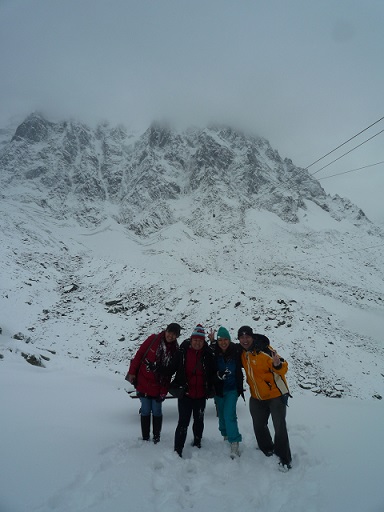The perfect summer escape in charming Chamonix
By Wendell Gaa
Summer 2016 in New York has seriously got to be one of the hottest and most humid on record which I’ve experienced living and working in this great city for the past five years, so much to the point where lately I haven’t even been motivated enough to even take simple hiking strolls around my Manhattan neighborhood.
With that in mind, maybe it’s time to consider a late summer vacation to somewhere cool, relaxing and refreshing, like Chamonix in the French Alps, exactly where I took a short holiday with some friends and colleagues from the Philippine diplomatic corps in September last year.
Chamonix (pronounced SHAW-MOW-NEE) is a valley resort area in the southern region of France which borders Switzerland in the east. It was the perfect side trip for three lady friends and myself traveling in from Geneva.
After a two-hour shuttle trip passing by picturesque hills and green meadows, we arrived at Chamonix, a charming and serene resort town replete with simple yet sturdy alpine-designed cottages. There were enough amenities, shops, hotel lodges and restaurants for tourists when visiting especially during the winter skiing season. We were technically in Chamonix during the late summer/early autumn transitional period, but the temperature was cold enough to warrant the need for us to don our skiing jackets. The skies were cloudy and misty, and even shrouds of fog were touching ground in some parts of the resort town, giving an added “high-altitude” feel to Chamonix.
As we prepared to ascend by cable car high up Chamonix’s famed Mont Blanc which overlooks the entire valley, we foresaw entering a wintery wonderland typical of the French Alps. In preparation, we purchased some gloves from one of the town’s several souvenir shops to prevent frostbites.
The valley region where we were currently at was not experiencing any snowfall yet at this time of the year, and then it dawned on me that even during the summer season this resort town is very popular for mountaineers traveling from all over the globe.
I soon learned that as far back as the 18th century when this place was obviously not as commercially developed, it was particularly a favorite retreat for continental Europeans looking to take a break from their daily crowded urban environments in the big cities. Back then, Chamonix consisted of little more than a few cottages huddled on the right bank of the Arve River in a small hamlet called “Le Prieure.” Traffic was unheard of considering that horse-drawn carriages were the common means of transportation.
It was then time for us to board our cable car. As we slowly elevated towards the top of Mont Blanc, I gazed with astonishment towards the snow-capped mountain peaks. It was indescribably a lovely sight. As our cable car continued to slowly climb, I looked down on the mountain grounds, seeing how there were plenty of fir trees and even some manmade pathways which looked to have been prepared for skiers. Soon, our car seemed to be partially enveloped by clouds, signifying our first stopover within the middle point of Mont Blanc.
We then disembarked and walked around to observe our chilly yet awesome mountainous and snow-blanketed surroundings. There was some partial visibility towards the direction of the valley from where we ascended, and most impressive was the sight of the towering peaks overlooking us.
Further adding to my surprise was a small wooden cottage which we found out was an actual bar/restaurant/souvenir shop right in the middle of an alpine range. Although it was closed, I could only imagine how packed this place would be with ski tourists during the actual winter season.
After less than 10 minutes, we finally reached near the top of Mont Blanc at a station known as Central Peak, which is some 3,842 meters above ground level. The mistiness surrounding the station disallowed us from getting a clear panoramic bird’s eye view of the entire Chamonix valley. Still, we got to enjoy some good dining of sandwiches and authentic “French” fries at a small café of the peak terrace. I later had the pleasure of taking video shots of my friends making “snow angels” on the terrace deck outside of the café. The realization of the chilly mountainous temperature finally sunk in when I briefly removed my gloves to use my camera. This was probably the highest elevation I’ve ever personally reached via cable car!
Before our road trip back to Geneva, we decided to journey on the Montevers Railway, a cable-operated train which was commonly used by locals in the 19th and 20th centuries. After riding through some green forested vistas, we arrived at the “Mer De Glace” or Sea of Ice, which is the second largest glacier in the Alps. It was disappointing to see that the glacier itself was barely visible while its immense carved mountainside pathway was almost entirely barren, save for some small patches of snow and ice. This was because the glacier itself over the years has undoubtedly shrunk due in large part to global warming. In fact, there was a pathway we could walk all the way down to a cave hole, and each time we descended down this pathway, there was a signpost for every stair level indicating how much smaller the glacier has become over the decades, a stark reminder of the precarious environmental condition of this planet and mankind’s need to protect it.
After descending down this pathway in what took perhaps 30 minutes, we finally got to the cave hole, which was an entrance to an indoor museum exhibiting sculptures and “furniture” all carved out of ice, including what looked to be a drinking bar. The ice exhibits were illuminated by a colorful array of blue, purple, red and yellow lights. For anyone ambitious enough to experiment staying in a hotel made entirely out of ice, this cave museum could serve as an ideal preview.














